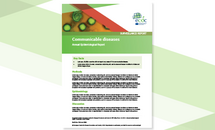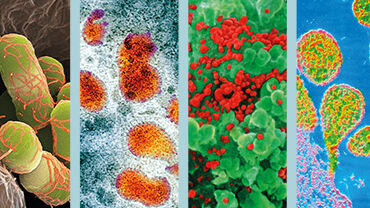Healthcare-associated infections acquired in intensive care units - Annual Epidemiological Report for 2020
In 2020, 11 124 (12.7%) of patients staying in an intensive care unit (ICU) for more than two days presented with at least one ICU-acquired healthcare-associated infection (HAI) under surveillance (pneumonia, bloodstream infection, or urinary tract infection).
Executive Summary
- Of all patients staying in an ICU for more than two days, 8% presented with pneumonia, 6% with bloodstream infection (BSI), and 3% with urinary tract infection (UTI).
- Seventy-one percent of pneumonia episodes were associated with intubation, 38% of BSI episodes were catheter-related, and 95% of UTI episodes were associated with the presence of a urinary catheter.
- The most frequently isolated microorganism was Pseudomonas aeruginosa in ICU-acquired pneumonia episodes, coagulase-negative staphylococci in ICU-acquired BSIs, and Escherichia coli in ICU-acquired UTIs.
- Antimicrobial use was empirical in 51% of ‘days of therapy’ (DOTs), directed in 37% of DOTs, and prophylactic in 10% of DOTs.
- Fourteen percent of Staphylococcus aureus isolates were oxacillin-resistant (MRSA) and 16% of Enterococcus spp. were glycopeptide resistant. Resistance to third-generation cephalosporins was reported in 22% of E. coli isolates, 38% of Klebsiella spp. Isolates, and 39% of Enterobacter spp. isolates. Carbapenem resistance was reported in 11% of Klebsiella spp. isolates, 26% of P. aeruginosa isolates, and 54% of Acinetobacter baumannii isolates.








